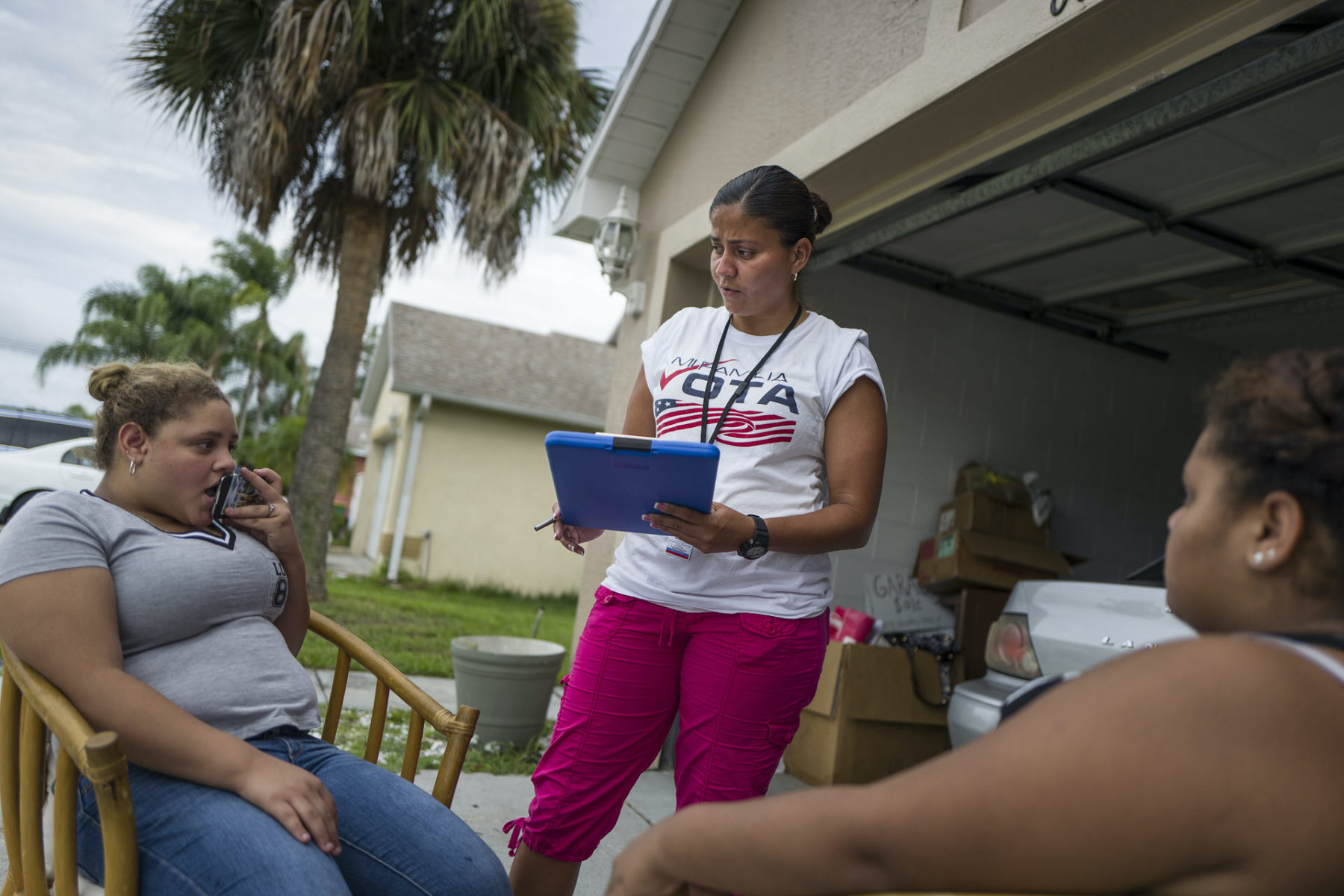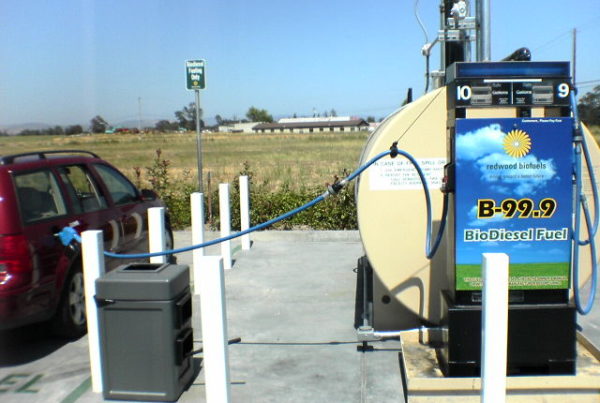Originally published by The 19th:
We’re the only newsroom dedicated to writing about gender, politics and policy. Subscribe to our newsletter today.
With early election results rolling in, it appears the upswing in Latinx voter turnout that political operatives were eyeing came to fruition — and Latinas likely led some of that charge.
According to preliminary numbers from Catalist, a company that provides data and analytics to Democrats, working class Latina voters cast more than 2.6 million early votes in battleground states in 2020, three times the number they cast in 2016. Young Latinas in particular, ages 18 to 29, cast about 75 percent of their early votes for Democrats.
Among the bright spots for progressives will likely be Arizona, where Democrat Joe Biden was leading as of Thursday morning. If he holds on to Arizona, the former vice president would be the first Democratic presidential candidate to win the state since Bill Clinton in 1996. Before that it was Harry S. Truman in 1948.
Exit polls in Arizona, while an incomplete measure of voting behavior, indicate a wide gap between Latinas and Latinos. Only 29 percent of Latinas voted for Trump, compared to 37 percent of Latinos.
Raquel Terán, a Democrat in the Arizona House of Representatives and a community organizer with several groups working on voter turnout, said that if Biden wins Arizona, she credits Latinas with delivering the state. She noted that several Latinas and other women of color were in down-ballot races 一 Democrat Anna Tovar is seeking a statewide office seat to regulate utilities and businesses, and Gabriella Cazares Kelly is expected to become the first Indigenous woman to be elected to county-wide office in Pima County 一 which potentially drew additional turnout.
If Biden’s lead holds,“Latinas delivered Arizona,” she said. “Latinas were leading campaigns. Latinas were the ones who were ensuring that their children and everybody in their household had a plan to vote. Latinas were mobilizing.”
In other battleground states, early Catalist data shows Latinas helped pull out the Democrats’ win in places like Wisconsin — a critical pick-up for the Biden campaign. In Wisconsin, early voting among Latinx voters rose 63 percent over 2016. Of the new votes cast, 57 percent were early votes cast by Latinas.
In states like Florida and Texas, the surge in Latinx voters helped propel Republicans to victory after months of outreach to those communities by President Donald Trump’s campaign. Exit polls put 45 percent of Latinas in Florida and 38 percent in Texas in favor of Trump.
Overall, Latinx early voter turnout was more than three times what it was in 2016, with 65 percent of that vote turning out for Democrats, Catalist found. Those numbers don’t capture votes cast on Election Day, but they do point to an increased turnout that made the Latinx community the second-largest voting bloc in the nation after White voters.
The Latinx vote is deeply divided by gender, with some polls ahead of the election putting the gap at 20 points or more. Latinas are far more likely to skew Democratic than Latinos, who are more likely to support Trump’s views on the economy and who tend to be drawn to his persona as a strong male leader. The “machismo” effect, Democratic organizers called it.
Polling prior to the election showed Trump’s hold on Latinx voters as a whole was thanks in part to a shift from men in his favor.
For Latinas, the handling of the coronavirus pandemic, family separation at the U.S.-Mexico border and the economic downturn were all issues that drew some toward the Democrats.
For years, campaigns have swooped in on election years to court Latinx voters, who have varying affiliations depending on their country of origin, time living in the United States and gender. Democrats hoped they could capture enough support in 2020 in critical battlegrounds, but the results, at least so far, are mixed — a side effect, organizers said, of a disorganized last-ditch effort in some states.
Florida is a prime example. The state went red for Trump by 3 percentage points — a landslide by Florida standards — with much of that shift driven by an erosion of support in key Democratic regions like South and Central Florida.
But the reason is complex, said Frances Colón, the Latinx vote state director for the Florida for All Coalition, a statewide group of progressive organizations.
“Every time a loss happens in Florida, we go look at the Latinos when clearly it’s the White groups that are a majority that are breaking for Trump,” Colón said.
Biden underperformed Hillary Clinton’s 2016 numbers in 54 of Florida’s 67 counties, most of them conservative, largely White areas, according to an analysis by Equis, a Latinx research firm.
But one of those underperforming counties was Miami-Dade, the heart of Florida’s Cuban American community. Although Florida’s most populous county ultimately supported Biden, it did so at much lower margins than expected. The same happened in Osceola County, the home to the majority of Florida’s Puerto Rican population. In several other counties with large Latinx populations, including Orlando’s Orange County and Tampa’s Hillsborough County, Biden performed better than Clinton.
The ultimate loss for Democrats in Florida was a result of a campaign that began too late in the swing state and lacked a focused mission, Colón said. Field organizers have been sounding alarms since the summer that the Democrats could lose Florida if they didn’t reach Latinx voters with concrete policy discussions and culturally competent messaging.
“There’s always a party, in this case the Democratic Party, that parachutes in fairly late in the game,” Colón said. “This is the type of thing that can happen when you don’t engage a group of voters consistently.”
The Republican National Committee, which coordinated with the Trump campaign, said it had helped organize multiple “community centers” this election cycle focused on Latinx voters. That included Florida.
Belén Sisa, the former Latinx press secretary for Bernie Sanders’ campaign, said the problem with get-out-the-vote efforts in Florida and across the country is that “you can’t reach out to [Latinx voters] in the same way you would a White voter who has been living their entire life in America … and is familiar with how this system works.”
She believes inconsistent messaging cost Democrats who were banking on the Latinx — and especially the Latina — vote in some regions.
In Texas, Biden underperformed Clinton’s 2016 margin by 8 fewer points, and he lost Latinx voters in South Texas. Zapata County, for instance, which supported Clinton by about 30 points, broke for Trump.
The results speak to the changing priorities of the Latinx vote that “can no longer be ignored,” said Natalia Salgado, political director at the Center for Popular Democracy Action, a progressive advocacy group.
“There is a story about people in the Valley, Mexicans in Texas, and the way they view themselves,” Salgado said. “We are looking at each other in the most honest light possible and we need to start talking to one another about what it means to be a Latino in this country.”
With that also has to come a more sophisticated approach for speaking to Latinx voters, Sisa said. The message that the Democratic party would plunge America into socialism, for instance, was particularly resonant for some Latinx voters and Republicans at large, but for months, Democrats dismissed it as ludicrous and didn’t address it head on. Sisa said she felt the campaign missed opportunities to talk about Biden’s plans to address health care inequalities, the pandemic recession and racial unrest — issues that were also important to Latinx voters.
“We expect people to be motivated to come out and vote and vote for something,” she said. “Then we are giving them this message of, ‘I’m not Trump,’ and expecting that that’s good enough. If we are not being fought for, how can we blame Latinos, too?”
Terán in Arizona said there were also missed opportunities with Latinas. She did not understand the “fixation” on Latino men in South Florida from the campaigns, when there was so much potential to appeal to Latinas. She said that outreach was done in Arizona.
“That was astonishing to me, because we have so many Latinas who are doing the work and who are engaging our communities,” she said. “And the focus should have always been on them. Because at the end of the day, we’re the ones who are delivering this win.”
If Arizona flips to blue, said Sisa, who is originally from there, it’s a testament to a continued, years-long effort from organizations on the ground to engage with the Latinx community in a nuanced way.
And it’s a message of what campaigns can achieve when they recognize that Latinx vote early and address that community honestly. Union members and a coalition of Latinx groups ran an unprecedented push to knock on 800,000 doors in Arizona in support of Democrats, something the Biden campaign opted not to do. It bore fruit.
“It took 10 years to get where we are now and to be able to flex that muscle of saying, ‘We have political power,’” Sisa said.
For Salgado, the 2020 election is already shaping up to be an indictment of past political strategies that put Latinas on the sidelines.
“Latinas knew what was at stake in this election, and they stepped up and they stepped out and they said, ‘We are going to change el rumbo de este país’ — the course of this country.”















